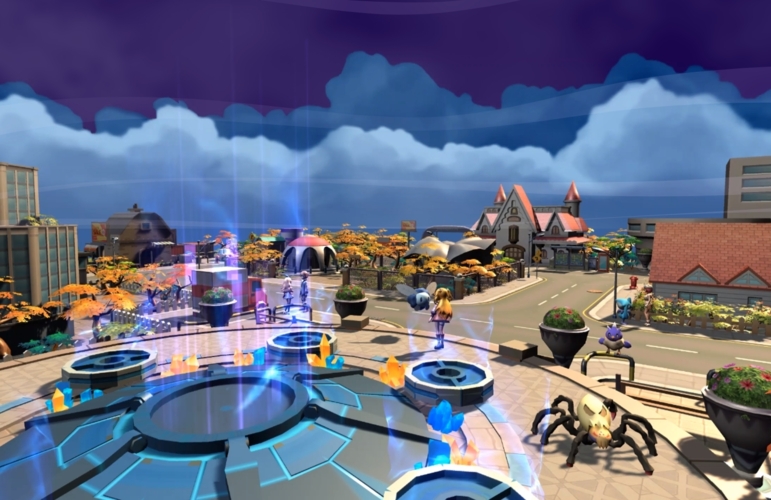Sometimes the only thing that distinguishes one brand from another is how they design their products. To stand out in the market, more companies around the world implement Design Thinking practices to their business culture. However, most people perceive product design as a decoration and associate it with the process of creating an attractive shell around a new device, software, or any other product. Great design is not only emotionally and visually appealing but is made for practical use. It is about adding a unique value proposition. Let's take a closer look at the role of product design in the digital field and сlarify why businesses should always take customer needs into account.
What is product design?
Product design is the entire process of identifying a market opportunity, defining a problem, designing a suitable solution, and validating this solution with actual users. Recently it has become a broad concept covering service design, software development, and physical product design. It extends the role of design within a product's lifecycle and business in general. Product design covers a few fields at the same time including marketing, ergonomics, business strategy, and others.
In this article, we would like to focus more on digital product design. This concept is mainly used for software engineering products such as websites, mobile, and web applications. Both digital product design and UX aim to create outstanding products that fulfill the needs and goals of the customers. Perhaps, the biggest difference is that product design is more focused on end-to-end product development lifecycle.
Why is product design important?
Product design is not only about a nice look, innovative features, or an easy-to-use interface. It is a holistic approach that puts customers at the center of the process to create a product that meets their expectations. However, no organization creates a solution just to please a group of people. Their goal, of course, is to attract more customers and, as a consequence, increase revenues by raising prices for a better product/service and outstanding performance.
The key to success is focusing on technologies that meet user expectations, rather than developing innovative features that users may not require. To minimize risk and ensure product development in accordance with the plan, the company needs to set measurable goals and analyze progress at each stage of development: from generating ideas and conceptual design to comprehensive development and launch.
Another bonus: product design can greatly influence customer behavior and brand loyalty. A company that involves customers in the design process will provide a higher return on investment and will be more preferable than its competitors.
Product design process
Product design is a user-centered approach, but at the same time, it should be business-driven. The development path is determined by the requirements of the target group, as well as current trends in your industry. As for digital solutions, different approaches can be applied to product design. One of them is called Lean and it includes the following phases: plan-build-measure-learn. Based on our experience, the product design process can be extended to 6 steps which should be followed and measured when creating a digital product from beginning to end.
Step 1. Research and idea generation
The first step usually involves brainstorming, market research, SWOT / PESTEL analysis, and user interviews. Research should tell us about customers, their behavior, goals, motives, and needs. You should also clarify where they experience difficulties and how they may feel when interacting with a potential product. All this is important because new trends, technologies, and other external factors influence customer preferences. The technologies that made people happy two or three years ago maybe less successful now. That's why you need to be sure that your concept is still relevant to potential customers.
Step 2. Product definition
The product definition is mainly based on the above-mentioned research output. Through the actual in-depth analysis of potential clients and market needs, you can define customer pain points and prepare a list of required features. It's time to work on a customer journey map that gives a holistic view of the service and identifies their milestones. If you wonder what a customer journey map is and how to create it, read our article here.
Step 3. Conceptual design
At this stage, you will start implementing the framework concepts and building a prototype. Depending on what kind of feedback you are looking for, you can start with a low-fidelity prototype by making a few simple hand-drawn sketches on paper. These sketches most often include only linear patterns. Then you can create wireframes and interactive / 3D prototypes using special software tools.
Step 4. Tests and prototype improvements
The purpose of creating a prototype is to quickly build a model and test it on your target audience. It means you should conduct usability testing to get valuable feedback. After testing the product and improving it, detailed design plans will be ready. In the software development context, this is a stage when UI designers create the final colorful user interfaces and work on style guides to unify the design for future product upgrades.
Step 5. Final deployment and launch
This process can be performed relatively easily, but keep in mind that unpredictable errors and other problems can occur when launching the first version, so each deployment should include a backup time in case of error correction and code changes. Moreover, the launch of a new product or service always involves the collaboration of all departments and groups, including marketing, supply chains (for physical products), and support.
Step 6. Post-launch activities: support and optimization
If you want to maintain a high position in the market, you should always have a plan for future updates. Designers, product owners, developers, and other professionals involved need to support the entire project even after its launch and note how it can be optimized and supplemented in future versions.
It is important to have a stable and well-structured process for two reasons: it helps your business stay focused and implement the product according to your budget and time expectations.
Benefits of product design development
Faster time to market
Companies launch a product that meets customer needs and is backed up with a business case. As a result, it helps avoid spending time on developing additional (and sometimes, unnecessary) features. This approach allows teams to test and deliver the product to the market quickly.
Improved collaboration and integrating end-to-end processes
It takes a lot of expert opinions to get a complete picture of the product you are developing. Specialists from different teams work together, share thoughts, and learn from each other. This is an incredibly useful experience that allows you to stimulate creativity in your company, introduce Design Thinking, and encourage people from completely different areas to share their experiences.
Higher level of customer satisfaction
We, as customers, are pushing the market to produce more innovative products due to the growing prevalence of customization and the introduction of new technologies. We are unlikely to buy a new phone with a weak battery/camera or use a taxi booking app which doesn't indicate the cost of the trip. Likewise, most users make purchasing decisions based not only on price but also on other factors, such as quality and usability. Product design, in turn, puts the user needs first.
Continuous innovation
Design-led businesses use quantitative and qualitative research during early product creation to understand the needs of their customers. They incorporate innovative methods such as social media scraping, focus group interviewing, big data analysis. Implementing these methods is what keeps companies growing. Thus, when it comes to choosing between your solution and that of your competitors’, product design can be one of the most important deciding factors.
Cost optimization
Reducing costs is an essential objective of product development. Lower costs allow you to provide additional discounts, attract new markets, and increase profit margins. Product design teams can minimize costs by using new software, spending less time fixing bugs, removing unrequired functionality, or redesigning the whole product to improve the user experience. Moreover, a good design has a direct impact on a company’s revenue. McKinsey report The Business Value of Design concludes that over five years, businesses with a high design index have produced 32% more revenue and 56% more returns from shareholders than rivals.
Risk identification
The biggest challenge that companies face when launching a new product is the lack of preparation. This doesn’t apply to Product Design as it’s a data-driven process. Project metrics and key performance indicators (KPIs), such as customer satisfaction scores, conversion rates, risk calculations, etc., provide product owners with data to make rational decisions. This helps manage resources and lead the project based on compelling facts, rather than on instincts and assumptions.
Who does the product design?
Digital product design requires an interdisciplinary approach since it covers a project from generating ideas to post-production activities. That is why experts from different fields have to be involved. It is also worth noting that these positions can be represented either by individuals (for example, in startups) or by entire teams (in large corporations). Some of the roles can be combined (for example, one person is responsible for UI and UX). Here is an example of the roles that are typically involved in product design:
Project managers are responsible for coordinating and timely completing product development within budget and business expectations. They set deadlines, delegate tasks, track progress, and prepare reports for senior management and product owners.
Data scientists and BI analysts search for valuable data sources and offer solutions to meet your business needs. They also help UX designers learn user behavior or interpret A/B testing results.
UX Designers perform design research, collect input from potential users, create customer journey maps, and participate in prototyping.
UI Designers focus on the product visuals or, in other words, what the user will see. It includes work with a color palette, illustrations, typography, drawings, diagrams, and other visual elements. Their work requires an understanding of the balance of colors, textures, and interactive elements that make the final product convenient and attractive.
Front-end and back-end developers bring prototypes to life. They write, debug, and execute the source code of software that is constantly tested by the QA team.
Marketing and sales specialists are responsible for bringing the product to market. They come up with new ways to promote a product, prepare sales and advertising contracts, and evaluate performances of offline and online campaigns.
Product design examples
iPhone
Since 2007, Apple's iPhone has revolutionized the mobile phone industry by inventing the app store, developing a sleek interface, and making Internet surfing an integral part of our lives. Though Apple wasn't the pioneer in phone production, it has become very popular because it produces elegant devices that offer an excellent user experience.
UberEATS
UberEATS is an application that allows customers to find affordable food delivery nearby with just a few clicks. The UberEATS team implemented Design Thinking by creating programs in which the team could immerse themselves in an everyday user's environment. Their ‘Walkable Program’ included physically visiting locations in the city to study the food, people, and culture. Besides, they tested their prototypes out by observing real customer experiences. This process has gained real value as UberEATS is now operating in 600+ cities globally and it’s still on the rise.
TikTok
The popularity of a Chinese video-sharing social app TikTok is caused by three reasons: immersive interaction design, the standard format of videos (the video can't be longer than 15 seconds), and a great variety of video customization options. TikTok stands out for its Agile nature of product development.
This approach ensures that the Tiktok team can quickly assess whether a new feature is working or not, and if necessary, make adjustments immediately. As a result, this ensures a high level of engagement and customer satisfaction, minimizes the loss of time and budget, and improves return on investment.
Final words
Successful digital products are not characterized by many functions. They are designed to meet the key needs of customers and their feedback. The only way to launch a meaningful product is to design it based on the user’s overall experience. If you are ready to discuss the idea of your invention and create a new digital product or service, leave us a message and make an appointment with UIG team.




